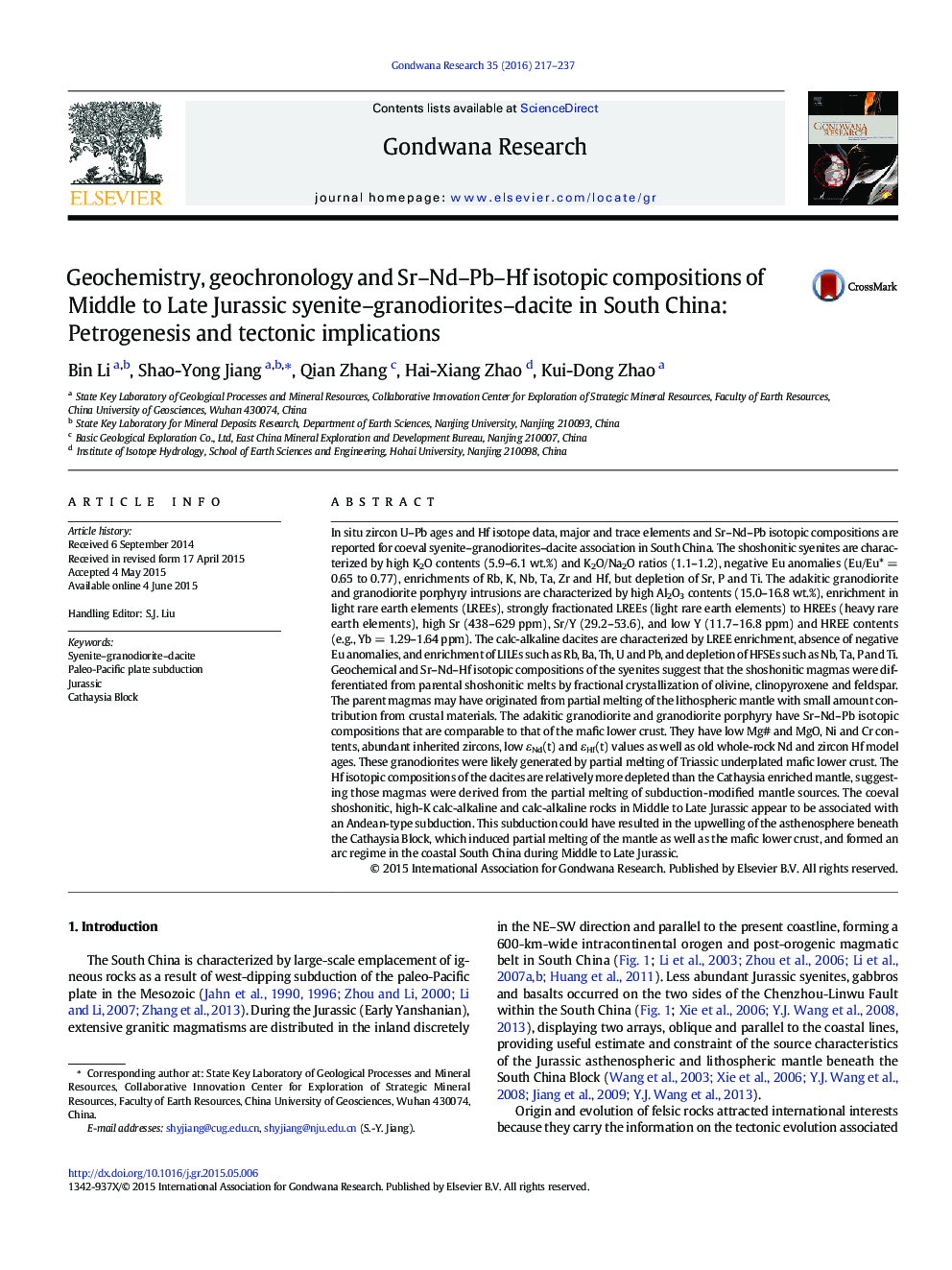| کد مقاله | کد نشریه | سال انتشار | مقاله انگلیسی | نسخه تمام متن |
|---|---|---|---|---|
| 4726599 | 1640136 | 2016 | 21 صفحه PDF | دانلود رایگان |
• The Jurassic syenite–granodiorites–dacite in South China related to an Andean-type subduction
• Syenite derived from partial melting of lithosphere mantle with minor crustal materials
• Granodiorite and dacite originated from mafic lower crust or subduction-modified mantle sources.
In situ zircon U–Pb ages and Hf isotope data, major and trace elements and Sr–Nd–Pb isotopic compositions are reported for coeval syenite–granodiorites–dacite association in South China. The shoshonitic syenites are characterized by high K2O contents (5.9–6.1 wt.%) and K2O/Na2O ratios (1.1–1.2), negative Eu anomalies (Eu/Eu* = 0.65 to 0.77), enrichments of Rb, K, Nb, Ta, Zr and Hf, but depletion of Sr, P and Ti. The adakitic granodiorite and granodiorite porphyry intrusions are characterized by high Al2O3 contents (15.0–16.8 wt.%), enrichment in light rare earth elements (LREEs), strongly fractionated LREEs (light rare earth elements) to HREEs (heavy rare earth elements), high Sr (438–629 ppm), Sr/Y (29.2–53.6), and low Y (11.7–16.8 ppm) and HREE contents (e.g., Yb = 1.29–1.64 ppm). The calc-alkaline dacites are characterized by LREE enrichment, absence of negative Eu anomalies, and enrichment of LILEs such as Rb, Ba, Th, U and Pb, and depletion of HFSEs such as Nb, Ta, P and Ti.Geochemical and Sr–Nd–Hf isotopic compositions of the syenites suggest that the shoshonitic magmas were differentiated from parental shoshonitic melts by fractional crystallization of olivine, clinopyroxene and feldspar. The parent magmas may have originated from partial melting of the lithospheric mantle with small amount contribution from crustal materials. The adakitic granodiorite and granodiorite porphyry have Sr–Nd–Pb isotopic compositions that are comparable to that of the mafic lower crust. They have low Mg# and MgO, Ni and Cr contents, abundant inherited zircons, low εNd(t) and εHf(t) values as well as old whole-rock Nd and zircon Hf model ages. These granodiorites were likely generated by partial melting of Triassic underplated mafic lower crust. The Hf isotopic compositions of the dacites are relatively more depleted than the Cathaysia enriched mantle, suggesting those magmas were derived from the partial melting of subduction-modified mantle sources. The coeval shoshonitic, high-K calc-alkaline and calc-alkaline rocks in Middle to Late Jurassic appear to be associated with an Andean-type subduction. This subduction could have resulted in the upwelling of the asthenosphere beneath the Cathaysia Block, which induced partial melting of the mantle as well as the mafic lower crust, and formed an arc regime in the coastal South China during Middle to Late Jurassic.
Figure optionsDownload as PowerPoint slide
Journal: Gondwana Research - Volume 35, July 2016, Pages 217–237
